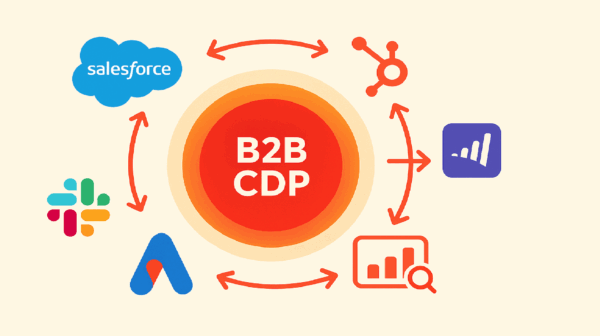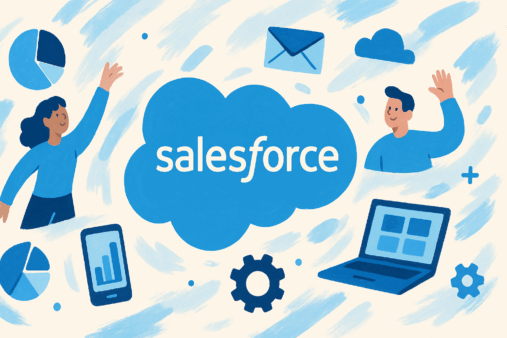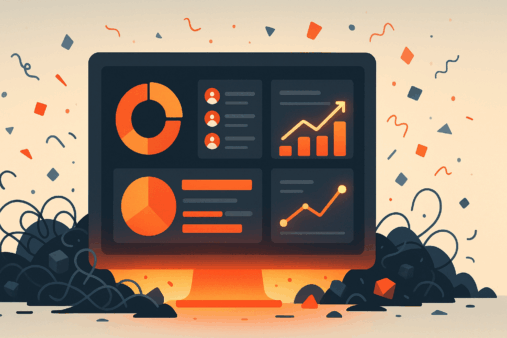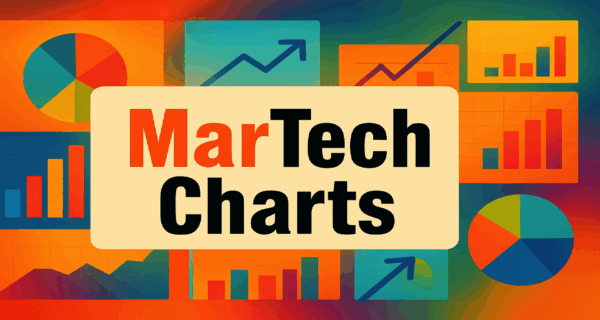B2B marketing
MarTech is your source for B2B marketing content. You’ll find a variety of up-to-date and authoritative resources, including the latest news, tactic-rich tutorials, and the latest data to help you work smarter and make better decisions.
What you read here is written by our experienced in-house team of editors and research professionals, and subject matter experts from leading brands and agencies.
Why we care:
The B2B buyer journey is evolving rapidly as it becomes more digitized, less predictable and more complex. The challenge for B2B marketers is to support what is now a self-guided journey involving numerous personas on accounts and increasingly expanding buying teams. Strategies that were once traditionally B2C are now being adopted by B2B marketers.
Don’t miss out! Get MarTech delivered daily to your inbox. Subscribe for free!
How small companies can win with account-based marketing
ABM isn’t just for enterprises. Smaller companies can now use AI, automation and focused targeting to drive efficiency, close deals faster and scale smarter.
Marketing artificial intelligence (AI)
The latest AI-powered martech news and releases
The chances of an historic OpenAI IPO in 2026 look pretty good. Here's a round up of AI-related news and releases.
Natural backlink profiles: What they are and why they matter for B2B SEO
What makes a backlink profile “natural” in B2B SEO? Learn how to build trust, avoid penalties, and earn links that help your content rank and convert.
Why GTM keeps selling to the least profitable people
Evangelism feels heroic — but it's burning your budget. Want GTM that compounds value, not waste? Learn the causal way.
5 ways a B2B CDP transforms your marketing and sales alignment
B2B CDPs unify fragmented data, reveal buying group behavior and turn sales and marketing into one revenue engine. Here’s what makes them indispensable.
Your nurture strategy is lazy marketing
Most B2B nurture programs fail because they automate instead of connect. Here are four steps to build a nurture system that drives engagement and conversion.
Marketing on LinkedIn: What you need to know
Your guide to LinkedIn's tools, strategies and best practices. Updated with information about the new conversion lift testing.
AI search is collapsing the B2B buyer journey
AI-powered search rewards credibility and depth. For B2B marketers, authority — not traffic — defines growth in the age of AI.
The TikTok-fueled shift B2B marketers can’t afford to ignore
As Gen Z turns digital fluency and economic pressure into influence, brands are learning to meet audiences where trust and commerce converge.
Why your B2B strategy should start with a story that builds trust
In B2B, trust is the real product — and storytelling is how you earn it. Here’s why every strategy should start there.
Marketing artificial intelligence (AI)
Why agentic AI is the next big shift in CX strategy
Agentic AI helps brands anticipate needs, simplify journeys and blend human judgment with AI speed for faster, smarter customer experiences.
Salesforce launches Agentforce 360 to embed AI agents directly in Slack for marketing teams
As Salesforce makes Slack the hub for AI agents, marketers face familiar hurdles: fragmented data, unclear ROI and cost creep.
You’re paying your sales and marketing teams to sabotage each other
Growth stalls when sales and marketing are rewarded for different wins. Better incentives get both teams rowing in the same direction.
Why it’s time to rethink your B2B thought leadership strategy — especially around events
Hidden buyers trust thought leadership more than marketing. Ann Handley and Katie Robbert show how authentic voices and live events turn ideas into influence.
Adobe introduces AI agents to help B2B marketers navigate long buying cycles
The new AI agents aim to help tackle long buying cycles by identifying decision-makers, personalizing journeys and accelerating deal flow.
How to unify customer data using tools you already have
Even without a CDP, marketers can start delivering personalized experiences by using existing CRM and BI tools to unify customer data.
Content and brand tips for the AI era
Drew Brucker, head of brand and content at Goldcast, talks about how content, brand and webinars evolve in an AI world.
Marketing artificial intelligence (AI)
OpenAI expands ChatGPT into an app platform — and a new channel for marketers
Making ChatGPT into an app platform creates a new, high-intent channel where marketers can reach 800 million users directly in conversation.
Invalid traffic detection gets smarter with HUMAN’s Page Intelligence
The latest addition to the company's ad protection suite gives brands new control over fraud and performance data.
AI search is shifting traffic from volume to value
AI search is reshaping how audiences find brands, driving fewer but higher-value visits that demand authenticity and reward originality over volume.
IAB cuts ad forecast as tariffs take a bite out of spending
Ad spend growth is expected to drop from an earlier prediction of 7.3% to 5.7% as 91% of ad buyers say tariffs are driving budget decisions.
Your content strategy just died. Here’s what comes next.
If you don't have a parallel, machine-readable version of your content, AI will misrepresent your brand, and competitors will write your story.
Why genAI search is as bad for shoppers as it is for marketers
GenAI search engines promise the “best” information, but deliver shallow, incomplete answers that frustrate buyers and shortchange sellers.
Account-based GTM pods that turn strategy into pipeline
Many ABM programs stall in execution. Pods align marketing, BDRs, sales and CS into one revenue team that drives meetings and growth.
Marketing artificial intelligence (AI)
OpenAI is staffing up to turn ChatGPT into an ad platform
OpenAI’s latest hire hints at a future where advertisers can run campaigns directly in ChatGPT, reaching 700 million weekly active users.
Broken playbooks and broken bones: Reinventing B2B with Ryan Nelsen
Ryan Nelsen, CMO of StackAdapt, joins Playbook Broken to talk about the evolution of B2B marketing.
Why chasing shiny CDP features leaves marketers feeling like imposters
Marketers often feel left behind in the CDP race, but the real success lies in mastering the fundamentals that keep data reliable and campaigns durable.
B2B marketers have a chance to close the small business confidence gap
SMBs are spending more on marketing but growing less confident in results, creating an opportunity for B2B marketers to step in with clear, data-driven solutions.
Time for a ‘Welcome Back’ program for returning customers?
A welcome-back email can turn churned customers into loyal ones by picking up where their last experience left off.
Marketing needs supply chain intelligence for manufacturers to win with customers
Manufacturers are losing deals to faster competitors, and AI is the only way to close the gap between marketing promises and operational delivery.
The martech refresh cycle is a myth
Vendors push unneeded upgrades, forcing marketing leaders into cycles of constant, costly replacements that solve nothing.
Marketing artificial intelligence (AI)
Marketers turn to AI for speed, while consumers turn away in distrust
Marketers are leaning on AI to meet rising demands, but while productivity climbs, consumer trust is sinking — and that gap could be marketing’s biggest risk.
B2B marketers at SMBs struggle with conversion rate optimization
SMB marketers say CRO is their top priority — but most aren't A/B testing their landing pages. What’s holding them back?
Marketing on Reddit: What you need to know
What you need to know about marketing on Reddit. Updated with details about the new community engagement metrics.
Designing the GTM model for marketing’s revenue era
Marketing’s next era is revenue-driven. Here’s how to design a GTM model that aligns stakeholders, accelerates pipeline and proves ARR impact.
What are marketers saying about HubSpot’s Loop Marketing playbook?
Loop Marketing reimagines content strategy for the AI age. How you feel about it depends on how you think about marketing.
Revenue teams struggle with execution, despite widespread AI adoption
AI adoption is booming, but only 28% see better sales results. The real issue? No systems for execution.
How to optimize B2B SaaS user journeys with GA4
See how GA4 funnels reveal where SaaS users drop off — and how to fix friction points to improve conversions, onboarding and revenue growth.
Think like a product manager, grow like a CMO
In an AI-assisted GTM world, the best B2B marketers don’t just run campaigns. They build systems that solve buyer problems and scale growth.
The real reason so many teams are struggling with email marketing
Flat engagement, weak pipeline, frustrated marketers. Sound familiar? Here’s what successful B2B teams are doing differently with email this year.











































